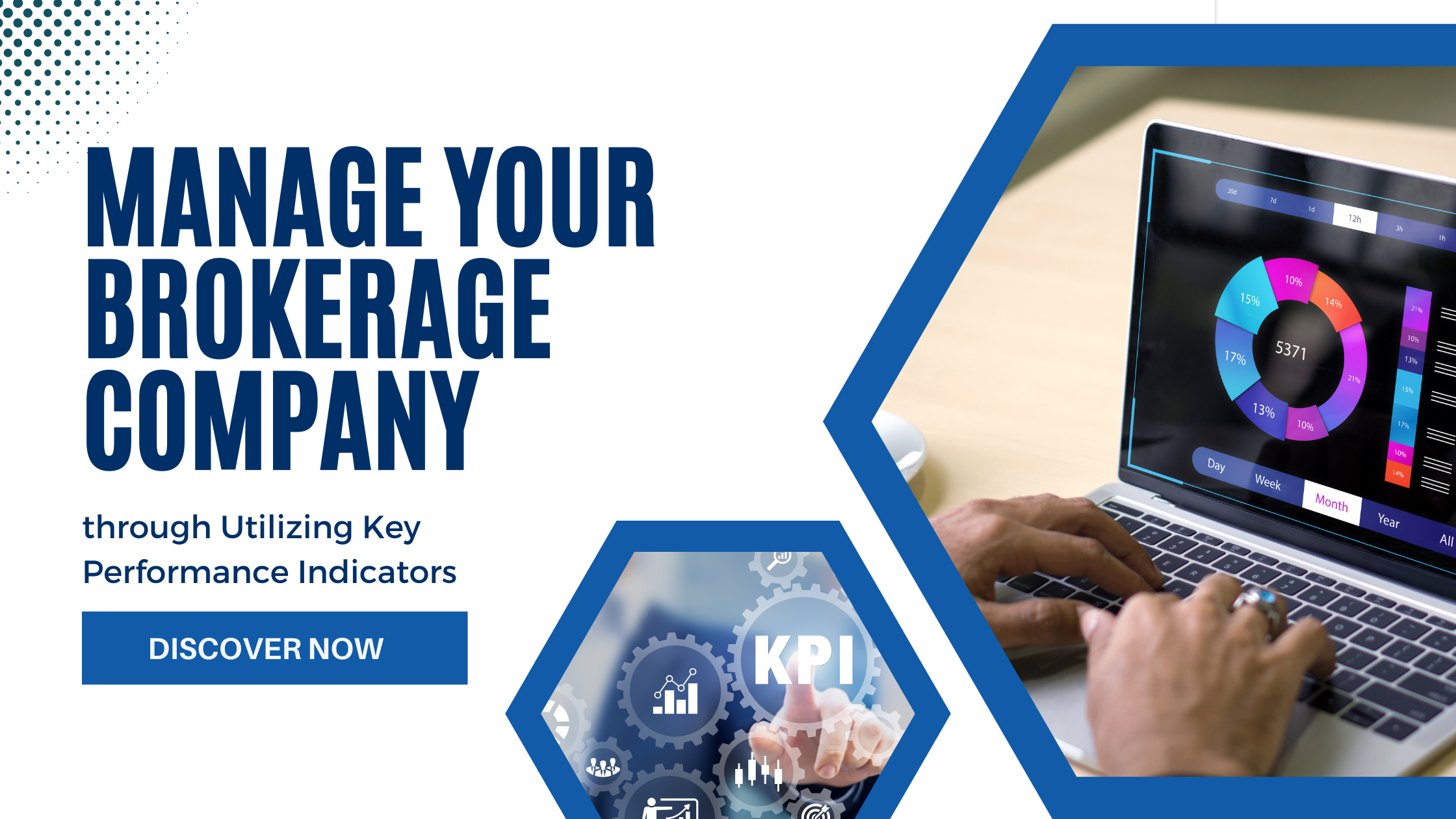Manage your Brokerage Company through Utilizing Key Performance Indicators
December 1, 2023
Manage your brokerage company through utilizing key performance Indicators to foster the gradual growth of your commercial real estate business. Establishing consistent routines and actions over time will attract increased inquiries, high-quality clients, and better opportunities, ultimately driving profitability. To ensure your business’s continued growth and the ability to navigate market fluctuations proactively, therefore, it’s crucial to closely examine both internal and external data points. This makes monitoring your Key Performance Indicators (KPIs) an essential practice for strategic and informed decision-making.
Take an active approach by examining your business’s market position and evaluating its operational efficiency. At the end of the day, we are in a ‘performance-based industry’, and on that basis, we should understand how our broker’s results are improving; that should be the ‘strategic’ part of what we do. The competition will always be there as we pitch; therefore, wouldn’t it be good to understand how your efforts are improving so you can boost your business profile and income?
By setting Key Performance Indicators for your business, you are taking an interest and strategic position in how you are improving; that’s a good thing. So, what are these indicators, and how can you use them? Here are some to think about:
Manage your brokerage company through utilizing key performance indicators for Internal and External Metrics
External Metrics:
Fees – The fees that you earn are just a number based on the value of the transaction. Understand and track the fees you are generating. You can start seeing trends in the type of transactions that will generate the most fees for your business. Break it down by property type and deal size. Monitor transaction seasonality to pinpoint peak activity periods throughout the year, equipping you to proactively manage your pipeline’s fluctuations.
Listings – Track days on the market for listings based on property type, location, and price. Tracking your sale price vs listing prices provides an indicator that you are valuing assets at the market and not just “buying” listings to have them trade at a much lower sale price. Tracking this data allows you to pitch your market knowledge of property values.
Market Share – Tracking this metric demands considerable time and effort. You must actively monitor the number of listings in your market in comparison to your competitors. Analyze the time on the market for those listings and leverage the final purchase price to your advantage. Furthermore, these numbers are valuable when you are pitching or presenting for a listing with a client
Internal Metrics:
Desk Costs – This metric takes center stage when it comes to managing your brokerage company effectively. Additionally, each producing agent has a cost associated with their desk, and throughout the year, tracking this metric allows you to better gauge profitability. However, it goes beyond just a desk cost; what you should be tracking is Effective Desk Occupancy (EDO). What this shows is how efficiently your business is operating. The “80/20” rule reigns supreme, signifying that a powerful 80% of your revenue springs from the dynamic efforts of a select 20% of your brokers. What this means is your business is essentially operating at a low efficiency. The best-performing brokerage operations are running at 55-60% EDO.
Opex Ratio – This is a KPI that very few operators track and one that has a significant impact on your margins. This ratio tracks your operating expenses as a percentage of your revenue. Why is this important? Let’s say your average splits paid to brokers is 65% and your Opex Ratio is 29%, what this tells you is that your operating profits are 6%. The industry average Opex Ratio is between 24-27%.
Utilizing Your Data
Do you have a clear understanding of your business’s positioning, and are you actively driving efficiency in your operations? Data and how you use that data helps you get results. With today’s push on data analytics, furthermore, the ability to use technology to assist you, it’s easier than ever to start tracking this information in your business. With the availability of brokerage management tools in the market and the increasing competition for market share and quality of talent now is the time to start working “on your business” rather than “in your business”.
Share:
More Posts:

